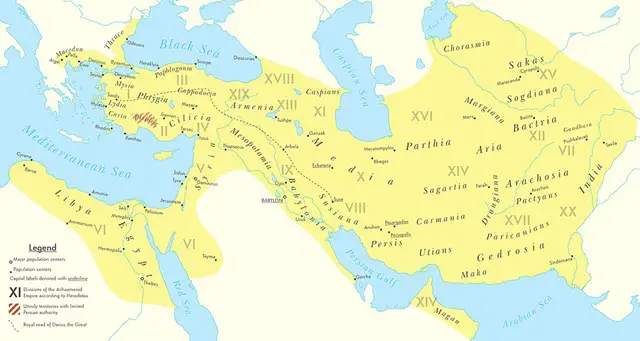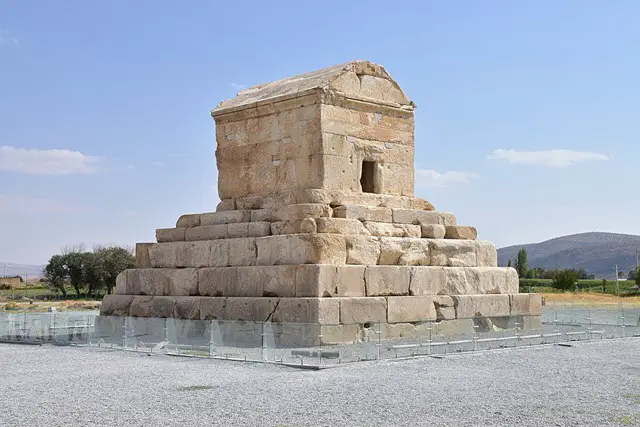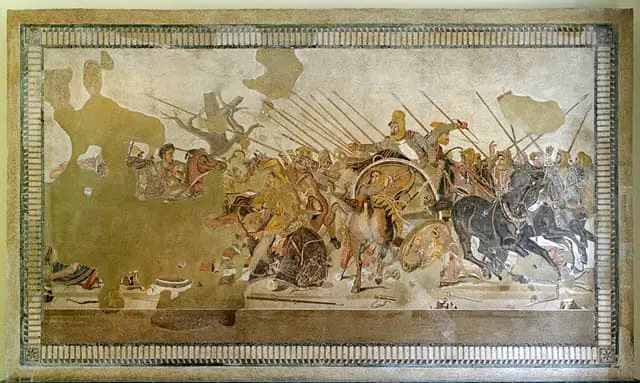
The earliest of the Persians are found in the Assyrian writings, where they are labeled as “Parsua.” The Persian tribes, along with other smaller tribes, spent a long time under Syrian rule.
When powerful kings ruled with an iron fist and wanted to expand their influence to forge great empires, a newly emerging force began to gain power in the Iranian lands.
However, around 609 B.C., these tribes launched a massive revolt that had such an impact that it caused the collapse of the Assyrian Empire.
The Akamenese, the most powerful of the Persian tribes, dominated several tiny tribes for many years. They captured lands and territories, yet they remained under the rule of the median empire.
By 559 BC, Cyrus the II, better known as Cyrus the Great, became King of Persia.
When did the Persian Empire end?
Content
The first and the most significant iteration of the Persian Empire is known to have ended between 334 B.C.-339 B.C. However, the empire rose and fell in the hands of many other Islamic conquerors through several different iterations.
Who helped the Persian Empire to grow?
The Persian empire expanded heavily under the Leadership of two of its most popular emperors in history. Cyrus the Great and Darius the Great.
What destroyed the Persian Empire?
Incompetent Leadership, economic crisis, corruption, and fruitless yet costly invasion of Greece resulted in internal conflicts, a fight for power, and various revolts which crippled the Persian Empire.
As a result, the Persian Empire fell after it was conquered by Alexander the Great in 329 B.C.
Rise of the Persian Empire

The Persian Empire rises to power in 550 BCE. It begins with the story of Cyrus the Great. According to the Greek historian “Herodotus,” Cyrus’s grandfather Astayages ruled Persia.
One night he had a dream in which he saw that Cyrus would become the ruler of the entirety of Asia. He was terrified by this dream.
He became so power-hungry and vicious that he tried to murder his grandson, who was still a child. He instructed his butler to take Cyrus to the mountains and murder him there.
But the butler could not find the strength to carry out this cruel task and handed the baby over to be raised by an ordinary family. Astayages became furious upon hearing this and ordered Butler’s son to be executed.
After Cyrus learned about his lineage, he returned to his country. He revealed his identity amassing popular support. Cyrus dethroned Asatayages and presented his claim onto the Persian throne.
Despite all the adversities that Astayages put him through, Cyrus the Great spared his grandfather’s life in the end after dethroning him.
Cyrus the Great was an expansionist king. Under his reign, the Persians conquered the capital of the Mediterranean empires and ruled over a vast territory rich in natural resources.
Cyrus, the great, was a decent human being and a merciful conqueror. He had the traits of a great king. He conquered and abolished slavery in all territories that he conquered.
Some believe that he wanted to expand his kingdom to spread his teaching and revolutionary societal rule. If the Persians had won the Greek battle, slavery would have been abolished thousands of years before modern times.
Despite the popularity of Cyrus the Great and his well-civilized empire, there was still an obstacle from the Mediterranean that threatened Cyrus’s sovereignty, the Greeks.
Anatolia, known as Turkey in the present day, was settled by Greek colonies and city-states that formed the Kingdom of Lydia that refused to be ruled by the Persians.
Initially, the Greeks attacked the Persian territories believing their cavalry was superior, but, to their surprise, the Persians were quite effective with their camels and horses mounted tactics and archers. The Persians brilliantly defeated the Greeks and the kingdom of Lydia.
As early as 539 BC Cyrus and his army sieged Babylon and captured it. The Persians were welcomed as liberators by the Babylonians who suffered from an abusive rule by King Nabonidus.
The Persians restored political order in Babylon and liberated the Jews captured in the city, Ending the famous period of the Captivity in Babylon.
Various smaller kingdoms and rulers allied with the Persians and served their alliance as protection against the Egyptians. The Persians also developed good relations with the Phoenicians, great Traders, and navigators.
Under the leadership of Cyrus the Great, the Persian Empire was also known for its generosity and well-civilized culture.
Cyrus the Great forgave his defeated enemies, and he even placed them in high-ranking positions in his army and governments. Cyrus issued a decree that is considered the world’s first human rights law to reinforce his noble decisions.
The Decree states,” I will prevent slavery, and my rulers and subjects are enjoined to prohibit the exchange of slaves in their spheres of government such a tradition shall be eradicated throughout the world.”
Many people were happier under Persian rule. Cyrus ruled various cultures and societies in good harmony, a feat unprecedented in human history, earning him the title of the Shepherd king.
Cyrus died in December of 530 B.C. Not much is known about his death, but all signs are that he died from injuries sustained against Nomadic equestrian tribes.
After the death of Cyrus the Great, the Persian Empire continued to expand under the leadership of Darius I, also known as Darius the Great. Many historians believe that Darius the Great ascended to the throne and expanded the empire to its pinnacle.
Darius realized that to function well, such a big empire needed to be correctly ordered and managed. To promote extensive communication, he established a system of provinces and governors and a postal service that spanned the empire.
Darius also used the tribute money from each province to support public works projects like roads and canals.
Darius the Great stabilized the vast empires his ancestors had conquered. Internal organization and planning allowed civilizations to exist for 200 years. He was loved by his subjects and always made decisions in the interests of his subjects.
Surprisingly, the Persian Empire also became very wealthy under his rule. The military superiority of the Persians was due to their natural culture in which warriors and generals were praised for their strength and bravery in battle.
The Persians were known to have the best horses in the world. They bred a breed called the Calling, famous for being large agile horses with fiery and aggressive temperaments perfect for the battlefield.
It was said that a true Persian learned 3 things from childhood writing, archery, and telling the truth. The Persians covered most of Asia, Africa, and Europe and became one of the most powerful empires.
Fall of the Persian Empire

The Persian Empire started to crumble under the reign of Darius’ son, Xerxes. He led the empire to a failed invasion of Greece in 480 B.C.E with the division of the Persian Empire.
The Greeks were heavily outnumbered yet inflicted tremendous casualties on Xerxes’s armies. Hence, Greece’s fruitless yet costly invasion resulted in internal conflicts, a fight for power, and various revolts.
The failed invasion led to the loss of Persian land and territories and diminished the empire’s funds, resulting in unpaid taxes, a crippled economy, and uncontrolled corruption.
In short, Xerxes exhausted the royal treasury, and when he returned home, he continued to spend recklessly on taxes. The final nail in the coffin came in 334 B.C. as Alexander the Great eventually conquered Persia and the Achaemenid empire finally fell.
Later versions of the Persian empire’s history focuses on the subsequent iterations to explain how later Islamic invaders were influenced by Persian culture.
In many ways, life was much more stable and progressive in 5th century Persia. The lasting impact of the Persian culture influenced several middle eastern civilizations.
This led to another golden age, the Islamic one. Once an empire is conquered, the culture and mentality of that empire do not simply disappear.
The later dynasties that ruled Persia preserved its culture and civilization. They also had a significant role in enhancing art, architecture, language, and cuisines in modern-day Iran.
